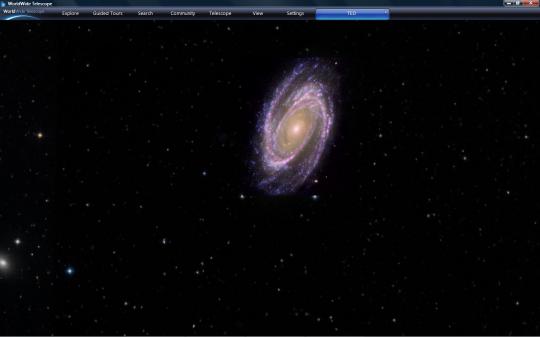While Microsoft is developing competition for Google Sky - the global telescope, Google itself is going one step further: searching for planets outside the solar system

The next trend in the world of technology in the opinion of Kesi Kazan, a journalist of the Daily Galaxy, is the Internet race to space. Kazan claims that the technology giants Microsoft and Google are in a close war in their pursuit of the next Internet revolution: space research and development.
Microsoft recently launched the "World Wide Telescope" software, which will use the vast databases of NASA's space telescopes and star observatories, including the Large Synoptic Survey Telescope (LSST), which was partially funded from the pocket of Microsoft founder Bill Gates. This project will be established in the Atacama desert in Chile and is planned to "see the light" in 2014. The telescope, with a diameter of 8.4 meters and a digital camera of 3 giga-pixels, will survey the entire sky visible from the southern part of the ESA, and will explore the mysteries of dark matter and dark energy in the universe. One of the applications in the project will make it possible to open a broadcast window of videos about objects that change rapidly such as exploding supernovae, potential asteroids that may hit the Earth, and distant objects in the Kuiper belt.
The LSST institutions will open this ambitious project to the general public. Anyone will be able to observe the sky through their computer, zoom in on objects that are thousands of light years away and even investigate using analysis tools that will be provided through the site and will allow those interested to participate in the scientific discovery process.
And on the other hand, Google recently joined the scientists of the Massachusetts Institute of Technology (MIT) who are working on a satellite to survey planets outside the solar system (TESS). According to them, the project will allow for the first time an accurate coverage of the sky in search of Earth-like planets outside the solar system that are transiting. A transit is a phenomenon that allows us, from our vantage point across Earth, to locate planets outside the solar system. A planet that revolves around a mother star that emits light, passes during its rotation on the surface of the star and appears as a black disc that hides part of the mother star's light, just as happens in event eclipses (solar or lunar eclipse).
"When the first spaceships to fly and settle into space leave the solar system, it is very possible that they will turn to planets of this type in search of a new home," says George R. Ricker, a senior scientist at the Kawli Institute for Astrophysics and Space Research at MIT.
Microsoft's new software is free and allows everyone, from inexperienced novices to professional enthusiasts, to explore galaxies, star systems and distant planets. All this through an interface similar to a computer game that allows you to zoom in or out to galaxies located thousands of light years away from us. Google's equivalent of Microsoft's World Wide software is the Google Sky software.
The World Wide software combines 12 terabytes of information - information equivalent to 2.6 billion pages of text - to create one complete image of the sky from various sources such as the Hubble Space Telescope, the Chandra Observatory and the Spitzer Space Telescope.
Now, instead of loading the telescopes on a crowded bus and queuing with the Israeli Astronomical Society around the country trying to find ideal observation spots that are free of light pollution and clouds, you can simply open the computer and start surfing the space. "I expect more people to learn a lot more about the sky because we've lowered the limits of light pollution, smog and bad weather conditions," says Chris Wong, principal scientist on Microsoft's team of researchers.
The programming works on the desktop of the computer, but downloads information and images from the Internet. The Google Sky software can run on a standard web browser or as a software download from their website. But there is a catch in the system requirements of Microsoft's World Wide Telescope software: it only works on Windows XP or Vista.
Sources

7 תגובות
amateur,
You are right 🙂
As an amateur, I already know these programs.
And it is true that the pictures from NASA and Hubble are spectacular.
But the experience of going down to Mitzpe Ramon with the Astronomical Associations, looking through my flimsy binoculars or telescope or the association's better ones and feeling the movement of the Earth through the lens, and hearing the experts like Yigal Fet speak to me in Hebrew and explain to me what the hell is going on there - the computer does not replace
There is a much better software than both of them together twice 2-STELLARIUM.
It can be downloaded for free at stellarium.org
Come on, how cool is that.
Dealing with poop (black).
Google Earth is much more convenient and user-friendly, in general it is better than WorldWide Telescope. Although the WorldWide Telescope has some advantages in images of Jupiter's planets and moons.
To be exact
The diameter of the primary lens is 8.4 meters and not the length of the telescope.